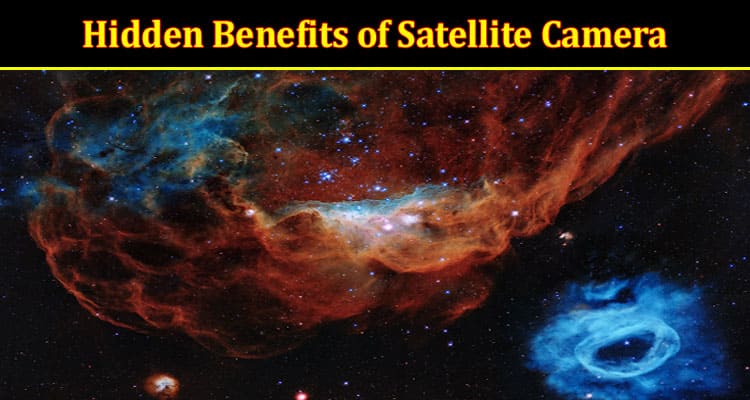Our reliance on space technology is greater than most people imagine. And its main contribution is not just exploring other planets — it is way closer to home. A single satellite camera, for instance, can capture and store huge volumes of information about conditions back on Earth, from changes in forest covers, urban areas and their pollution levels, marine life conditions, etc. There are hundreds of thousands of satellite cameras watching our planet 24/7. So, what are they used for, exactly? And what are the advantages of satellite photography? Let’s find out.
How does a satellite camera work?
Satellite cameras capture light reflected from the Earth’s surface using a set of sensors that vary from one camera type to another. For example, some satellite camera lenses can only capture sunlight radiated from our planet, while others emit their own light and can take pictures during the night, too. This parameter, like many others, depends on the intended satellite camera uses — that is, which images they capture and for what purpose.
What is the resolution of satellite cameras?
Resolution is one of the many various parameters of satellite cameras, and it can alter greatly from one device to another. Similar to other characteristics, a lot depends on the mission goals. Today, the resolution range of a satellite camera can be roughly subdivided into:
- Low-res, covering around 30 m per pixel and used for scanning large ground areas — for example, forestation, water, or marine areas to analyze impacts of environmental transformations.
- Medium resolution, ranging from 10 to 30 m per pixel, and used in areas where both large and small details matter, i.e., in urban planning.
- High-res, covering spaces from 1 to 10 m per pixel and serving multiple applications, from monitoring wildlife and vegetation to infrastructure and urban planning.
- Very high-resolution cameras cover less than one meter of ground per pixel and are generally used for mapping, military surveillance, and other areas where the highest level of precision is necessary.
Types of Satellite Images
satellite cameras can capture images in different light spectrums – the actual type depends not only on resolution and sensors but also on mission goals. For example:
- Visible light: these pictures are practically the same photos we can get over any other digital camera, and are shot in red, green, and blue wavelengths – that are colors our eyes can perceive.
- Infrared: human eyes cannot perceive these waves, but such pictures are useful for collecting information on vegetation levels and soil conditions.
- Thermal infrared: cameras capturing heat radiating the Earth’s surface can provide information about underground fires and volcanic activity, and are vital for ensuring timely response to natural disasters.
- Multispectral: a more advanced example of satellite camera tech that works across different spectrums, usually including visible range and near-infrared. These images can be used for multiple purposes, from environmental analysis to crop monitoring.
- Hyperspectral: these satellite cameras work within a narrow spectral band and are usually used for scientific research — for example, in geology or mineral exploration.
- Synthetic Aperture Radar (SAR): another advanced example of technology that works at night just as well as it works during the day. The imagery is suitable for different purposes, from mapping to disaster monitoring.
Those are only some examples of the image types commonly shot by satellite cameras today, but the actual list is longer. Considering the number of shooting techniques, the uses for obtained imagery should also be plenty — so what are they, exactly?
What are satellite cameras used for?
Earth monitoring is a multi-faceted process that involves various activities, for example:
- Wildlife monitoring: satellite cameras offer a way to monitor wildlife in its natural habitat without causing any disruptions to the natural life cycles. And while satellite technology today cannot track every separate animal, it can provide useful data on overall populations. So far, satellite imagery has helped restore populations of several endangered species, particularly in the Arctic.
- Yield forecasting: analyzing previous yield, along with current crop and soil conditions, can help small and large-scale farmers predict yield. On a larger scale, this gives a better understanding of commercial agriculture and helps ensure uninterrupted food supplies.
- Infrastructure monitoring: critical infrastructure such as bridges, dams, and pipelines is also observed with satellite cameras to ensure proper maintenance. The pictures provide accurate info when repairs or on-spot human professional checks are needed.
- Weather forecasting: one more area that would not be possible without satellite imagery and a great example of an industry segment that is constantly improved to ensure higher accuracy.
These are some benefits of satellite camera technology, but the actual applications already go beyond the ones described above. Plus, space tech is a rapidly evolving niche, with new technologies underway. Still, one thing is almost certain: EOS imagers will keep standing guard over our planet and may eventually even help us find solutions to the pressing problems here on Earth.

